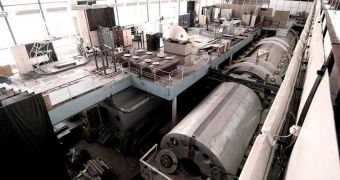A collaboration between the European Space Agency (ESA) and the Russian Federal Space Agency (RosCosmos) is about to embark on a very ambitious project. Six people are to be locked away in a Russian facility for 520 days, in order to simulate the effects that real astronauts would experience in the case of a return-trip to Mars. With existing technologies, this is the length of time that experts estimate a journey to the Red Planet would take. What the new experiment seeks to accomplish is understand the challenges associated with such an endeavor, but from the “human side” of the argument, ScienceNow reports.
The technology is, oddly enough, just a short distance away from being suitable for such a task, but not the same thing can be said with certainty about humans. There are serious psychological and health issues to consider if you place a crew of 4 to 6 astronauts inside a metal box, and then send them hurtling to another planet. There are space radiation to consider, in addition to solar flares and other such cosmic occurrences. But bacterial infections, claustrophobia and depression can be equally as devastating, and such a long-time journey could easily end in disaster. This is why experiments such as the Mars 500 need to be conducted first.
But the project almost didn't materialize. The costs of hosting the modules that will contain the astronauts for one and a half years at the Russian Institute for Biomedical Problems (IBMP), in Moscow, has not been released. However, sources close to the decision-making process revealed that both ESA and RosCosmos needed to dig deep in their pockets to make it a reality. Now, the four modules that will simulate a Martian transport spacecraft are connected and in place, and the entire program is ready to be set in motion. Six people are competing for a chance to be a part of the experiment, and conditions to be eligible include speaking both Russian and English fluently, as well as advanced training in fields such as medicine, electronics, and other relevant domains.
While inside the experimental modules, the “astronauts” will have no communications to the outside world, other than the one authorized by Mission Control. A delay will also be integrated in the signals traveling from the bogus spacecraft to the control center, simulating the delay that will be incorporated during a real spaceflight, as the distance between the astronauts and Earth increases. The people aboard will also be eating the same freeze-dried food that the crew of the International Space Station (ISS) is currently eating. Basically, every aspect of their lives for 520 days will be subjected to the rigors of a spaceflight.

 14 DAY TRIAL //
14 DAY TRIAL //